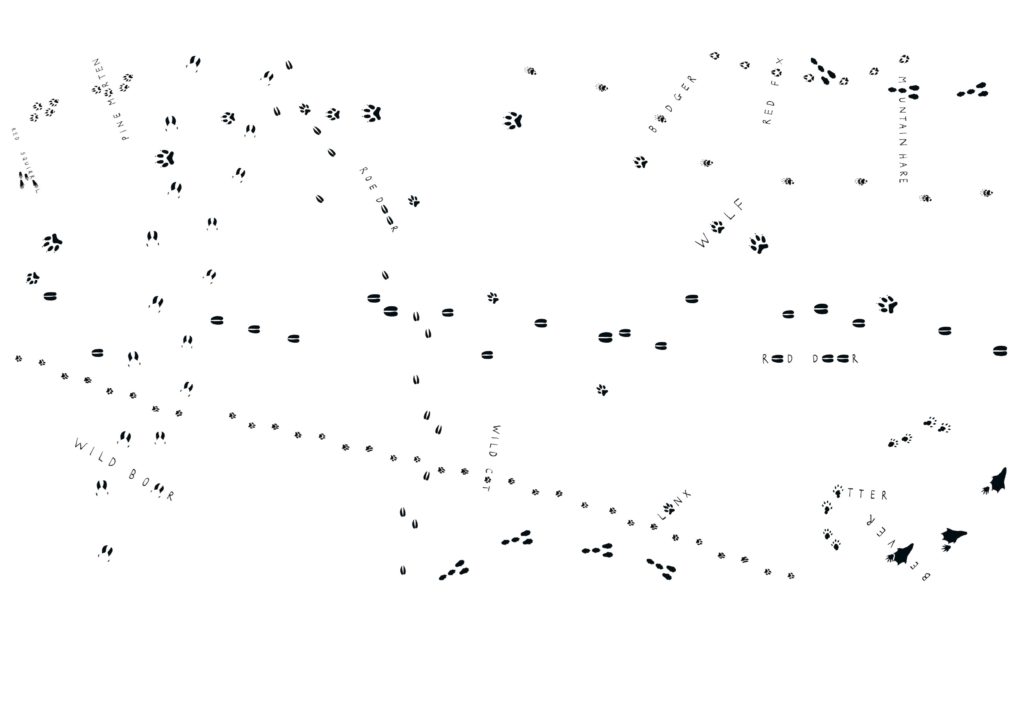The third of our quarterly print artefacts is trotting off to Middler and Lunker-tier subscribers this week.

Titled Wilderness Tracking, the print is designed by artist, composer and performer Hanna Tuulikki, who writes:
‘The print depicts the tracks of animals that dwell – or once dwelt – in the Caledonian Pinewood, with trails suggesting narratives as species emerge, interact and criss-cross.
Identifying and tracking prints made by other animals, our ancestors learned to read the landscape as hunters, and it has been suggested that human mark-making evolved as we began to imitate more-than-human marks in our own pictoral systems. Gradually written characters lost their reference to natural phenomena and became associated with human-made sounds, producing the modern alphabet, but if we look closely at the ground, we can still learn to read tracks in the wilderness.
In the Oxford dictionary, wilderness is defined as a “neglected, uninhabited, or inhospitable region”, but the word itself derives from Middle English for wild, wilde, and deer, deor, making wilderness the “deer’s place”. In Old English, however, deor could also mean any animal or beast, so wilderness might perhaps be defined as the “place of the wild animals”. Whatever our definition, our relationship with wilderness defines and impacts real ecology.
The ancient Caledonian forest, characterised by Scots Pine trees, was once a huge forest stretching across Scotland. Over many centuries, grazing by sheep, cattle and wild deer, along with the felling of timber, removed most of this precious woodland from the hills. Now only about 1% of the original forest is left, broken into small, isolated fragments, and much of the wildlife that depended on this habitat has also been lost through hunting, or simply because there was not enough forest left. As we face the reality of climate breakdown, re-wilding forests like the Caledonian will be key to addressing ecological degradation. The charity Trees for Life are re-wilding parts of the Caledonian forest, planting new trees and reducing grazing pressure to allow the forest to recover and regenerate. The charity hopes to bring red squirrels, capercaillies, beavers, wild boar, as well as predators such as lynx and wolves back to their native habitats. What would this balanced ecology look like?’
Each print is signed and numbered by the artist.
*
Caught by the River subscribers get access to exclusive content, print matter, discounted event tickets and more. You can take out a membership here.